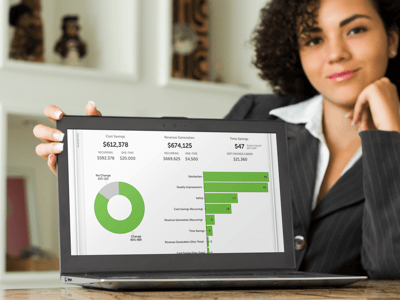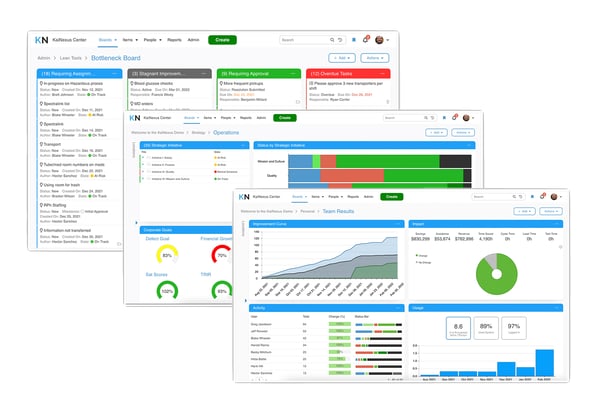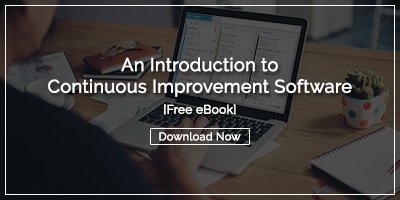 Companies constantly seek ways to improve process efficiency and reduce waste in today's rapidly changing business landscape. One approach that has gained widespread popularity is Lean Business Process Management.
Companies constantly seek ways to improve process efficiency and reduce waste in today's rapidly changing business landscape. One approach that has gained widespread popularity is Lean Business Process Management.
Lean is a methodology that originated in the manufacturing industry but has since been adopted by organizations of all types and sizes. This article will provide an overview of what Lean process management is and how it is applied. We will also explore the benefits of Lean software and some fundamental principles guiding its implementation.
What is business process management (BPM)?
Business Process Management (BPM) is the systematic approach of identifying, modeling, analyzing, improving, and monitoring the various processes that comprise an organization's operations. The primary objective of BPM is to optimize business processes, increase efficiency, reduce costs, and improve the quality of products and services offered by the organization.
BPM involves a continuous improvement cycle where organizations identify their current business processes, analyze them, and then make changes to optimize their performance. Process management can be used in any organization, from small businesses to large corporations. It can improve processes in various areas, such as finance, human resources, marketing, manufacturing, and customer service.
Why is business process management software important?
Lean business process management software helps organizations streamline their operations and improve efficiency. It incorporates the principles of Lean management, which focuses on reducing waste and increasing value to the customer, into process optimization.
Lean software typically includes tools for process mapping, analysis, and improvement project management, as well as workflow automation, collaboration, and reporting features. It can identify bottlenecks and inefficiencies in processes and implement changes that will improve performance and reduce costs.
Lean business process management software is a significant advantage because as teams adopt Lean management software, they rapidly establish a shared vocabulary for their improvement endeavors. They establish uniform practices for communicating improvement opportunities, leading to the emergence of a collective experience. This reinforces the organizational culture and facilitates the integration of a Lean management system as a regular aspect of daily operations.

The Benefits of Lean Process Management Software
Organizations that adopt Lean methodologies gain the advantage of achieving ongoing improvement in all aspects of their operations, from the top-level executives to the employees on the front lines. In addition, managers benefit from specific advantages, which include:
Smarter business processes:
When organizations analyze their business processes with the goals of removing waste and improving customer value, they frequently find that convoluted processes or poorly defined standard work leads to defects, rework, and other quality-related problems. Business process management helps identify and resolve issues leading to higher quality outputs.
More effective use of resources:
The Lean principle of pull focuses on producing items only when there is a need for them. This approach is based on the idea that producing goods or services based on customer demand helps to reduce waste, improve efficiency, and increase customer satisfaction.
In a pull system, work is initiated based on customer orders or requests, which triggers the production or delivery of the item. Lean software offers a way to visualize and manage pull so that work-in-progress moves seamlessly from one stage to the next.
Improved workforce focus:
Eliminating wasteful activities allows the workforce to concentrate their efforts and attention on cost-effective activities that add value. In addition, Lean business process management requires that every employee understands how their work is related to the bigger picture and which business objectives are essential to the strategic plan. Finally, lean software helps leaders align individual performance metrics with the company's long-term and annual goals.
Increased efficiency and productivity:
Workers are more productive and efficient because of this improved focus. Unnecessary tasks no longer create noise and opportunities for error. Lean business process management software amplifies the efforts of each employee, saves time, and speeds the time to improve. In addition, Lean software provides an easy way for every employee to suggest new opportunities for improvement, ensuring that no good idea goes to waste.
Better Customer Service:
Lean process management software helps organizations improve customer service in two ways. First, focusing on customer value puts the customer front and center. The guiding principle for identifying waste is whether the customer gets value from a process or task. Next, BPM software streamlines the implementation of process improvements designed to improve customer satisfaction.
What to look for when buying business process management software?
Assessing software for any purpose can be challenging, as it requires considering technical infrastructure, user experience, features, implementation, and support. Selecting the appropriate BPM management software presents its unique challenges, particularly as most individuals have little to no experience evaluating or utilizing this software.
Here are some high-level considerations for selecting Lean business process management software:
Process Visualization
Visual presentation of information is highly effective in aiding people's understanding and retention of it, compared to other modes of expression. Visual management identifies problems and disruptions in a workflow or process.
Process visualization, which can be achieved with Lean management software, is a potent instrument for continuous improvement, enabling easier engagement of workers, offering leaders valuable insights into the entire process, supporting business rules, and ensuring desired outcomes are achieved.
Process Automation
Process automation with Lean software involves using technology to streamline and automate tasks, reducing manual effort, minimizing errors, and improving efficiency. Lean software, specifically designed to support Lean principles and methodologies, can automate processes such as data collection, analysis, reporting, workflow management, and task assignment.
Process Monitoring
Process monitoring with Lean software involves using technology to track and analyze KPIs in real-time, providing insights into how well a process is performing and identifying opportunities for improvement.
Lean software designed for process monitoring enables organizations to collect data from various sources and then use this data to track KPIs such as cycle time, lead time, throughput, defect rates, and other metrics. This enables organizations to monitor their processes continuously, identify potential problems, and take corrective action before they lead to quality issues, delays, or cost overruns.
Performance Monitoring and Analytics
Financial metrics such as profit and loss are typically the focus when examining the metrics commonly used to gauge an organization's performance. Customer service metrics such as customer satisfaction and HR metrics like turnover are also measured across various industries.
However, tracking these metrics alone is only beneficial if the data is used to enhance and improve processes throughout the organization. Therefore, continuous improvement should be integrated into every metric senior executives prioritize.
Using Lean BPM software's reporting tools to support this approach ensures that all effectiveness measures serve as a means to identify areas for improvement and implement necessary changes across the organization.

Integration with Other Business Tools
To maximize its effectiveness, lean management software must integrate seamlessly with other business tools and APIs (Application Programming Interfaces).
For example, Lean software can integrate with enterprise resource planning (ERP) systems, customer relationship management (CRM) systems, and human resources management (HRM) systems, allowing it to access and analyze data from these systems or send information to them to improve business operations and optimize performance.
Cloud-Based Access
It may go without saying, but cloud-based business process management platforms are a significant advantage given how modern work operates. People aren't always in their workspace when inspiration strikes. Online management tools make it possible for folks to use their mobile apps to record activities, suggest improvement opportunities, or just check in on the progress of a project.
Implementation
Once you've found a solution that offers these critical features, it is important to look at the implementation process as well. A concrete implementation plan is crucial to achieve long-term success and widespread adoption. It is important to inquire with the vendor about their approach to getting your organization up and running.
Will they provide a dedicated account manager to guide you through the process?
Do they have an effective onboarding methodology in place?
Moreover, it is vital to understand how long-term customer support will be provided and whether a knowledge repository for self-service help will be available.
Best Business Process Management Software
The ideal business process management software solution will help your organization improve operational efficiency, support business analysis, and increase your organization's agility. With it, you'll collect innovative ideas, implement improvements, and guide your team toward the organization's most critical strategic objectives. Modern BPM tool support business logic and provide a platform for consistent positive change. Critical features include:
Customizable Workflows: After identifying an opportunity, it is important to evaluate and implement a solution if selected. The ideal system should have customizable workflows with alerts and notifications within the application and through email to ensure that the improvement project is not overlooked and that everyone is up to date.
Simple Workflow Automation: With simple workflow automation, organizations can reduce manual errors, increase process efficiency, and improve overall productivity. The feature enables users to create and configure workflows easily, define rules and conditions for task completion, and track the progress and completion of tasks in real-time.
BPM Software for Kanban: By providing a visual representation of the work in progress, Kanban boards improve communication, collaboration, and transparency. They enable teams to identify bottlenecks, prioritize tasks, and optimize workflows.
BPM Kanban boards help to ensure that work is completed on time and to the required quality standards, ultimately enhancing customer satisfaction.
Low-Code Solution: While Lean business process management software is a critical element of success, only some organizations have the desire or the resources to build and manage a home-grown solution. Further, valuable IT resources can be more effectively leveraged while focused on other priorities. That's why the best BPM management software can be customized for the organization's unique needs without the need for development.
Types of Business Process Management Software
Several types of business process management software are available in the market, each with its own features and functionalities. Here are some of the most common types:
Modeling software: This type of BPM software is used to model, analyze, and optimize business processes. It enables users to create process diagrams, analyze process metrics, and identify process bottlenecks.
Integration software: This type of BPM software integrates various systems and applications within an organization. It enables users to connect different systems, automate data transfers, and streamline processes.
Monitoring software: This type of BPM software is used to monitor the performance of business processes in real-time. It enables users to track key performance indicators (KPIs), identify issues, and take corrective actions.
Optimization software: This type of BPM software is used to optimize business processes by identifying areas for improvement and implementing changes. It typically includes process simulation, scenario analysis, and what-if analysis.
Overall, BPM software helps organizations to streamline processes, reduce costs, and improve efficiency, ultimately enhancing customer satisfaction and driving business growth.
Case Studies on Lean Business Process Management Software Implementation
The Standard Group: The Standard Group, a print and marketing solutions provider, implemented BPM software to improve its continuous improvement processes. Using the platform, the company was able to track and manage improvement projects more efficiently, resulting in significant improvements in quality, cycle time, and cost savings.
The company saw an ROI of 300% within the first year of using Lean business process management software.
UnityPoint Health: UnityPoint Health, a network of hospitals and clinics, implemented BPM technology to streamline their improvement project management process, increase transparency, and achieve significant cost savings. Using Lean management software, UnityPoint Health was also able to identify areas of improvement and implement changes quickly. The platform's flexibility allowed them to customize workflows to fit their specific needs, and the ease of use drove adoption across the organization.
As a result, UnityPoint Health saw an ROI of 125% within the first year of using the platform.
Cannistrao: Cannistraro, a mechanical construction company, implemented Lean management software for continuous improvement and achieved significant results. By utilizing the software, the company could track improvement projects and monitor progress, resulting in increased employee collaboration and engagement. The company also experienced improvements in safety, quality, productivity, and financial metrics.
Cannistraro found that using Lean management software allowed them to identify and implement improvement opportunities faster and more efficiently, leading to a significant return on investment.
How KaiNexus Can Help
The KaiNexus Lean business process management solution helps organizations achieve a digital business transformation that furthers operational excellence.
Continuous improvement: KaiNexus provides a platform for organizations to manage and track their ongoing improvement efforts. The software enables teams to collaborate, identify improvement opportunities, and implement solutions.
Efficiency: The software streamlines processes and eliminates wasteful activities, improving efficiency and productivity.
Visibility: KaiNexus provides real-time visibility into improvement efforts, enabling teams to identify and resolve issues quickly.
Data-driven decision-making: The software captures and analyzes data, allowing organizations to make informed decisions based on facts rather than assumptions.
Accountability: KaiNexus provides accountability and transparency, ensuring all team members know their responsibilities and progress towards goals.
Flexibility: The software is flexible and can be customized to meet the specific needs of each organization.
Integration: KaiNexus can integrate with other business tools and APIs, streamlining workflows and increasing efficiency.
KaiNexus software enables organizations to improve their processes, increase efficiency, and drive continuous improvement across all areas of their operations. Our experts are happy to chat about how your team might enjoy improved business processes and a more efficient way of working.
In conclusion, the Lean approach to continuous improvement is a robust methodology for any organization looking to increase efficiency, reduce waste, and improve overall performance. With the help of KaiNexus software, organizations can more easily implement and manage Lean initiatives, enabling them to better track progress, identify opportunities for improvement, and drive sustainable results over the long term.
By embracing Lean and leveraging tools like KaiNexus, businesses can gain a competitive advantage and position themselves for success in today's fast-paced, ever-changing marketplace.



Add a Comment